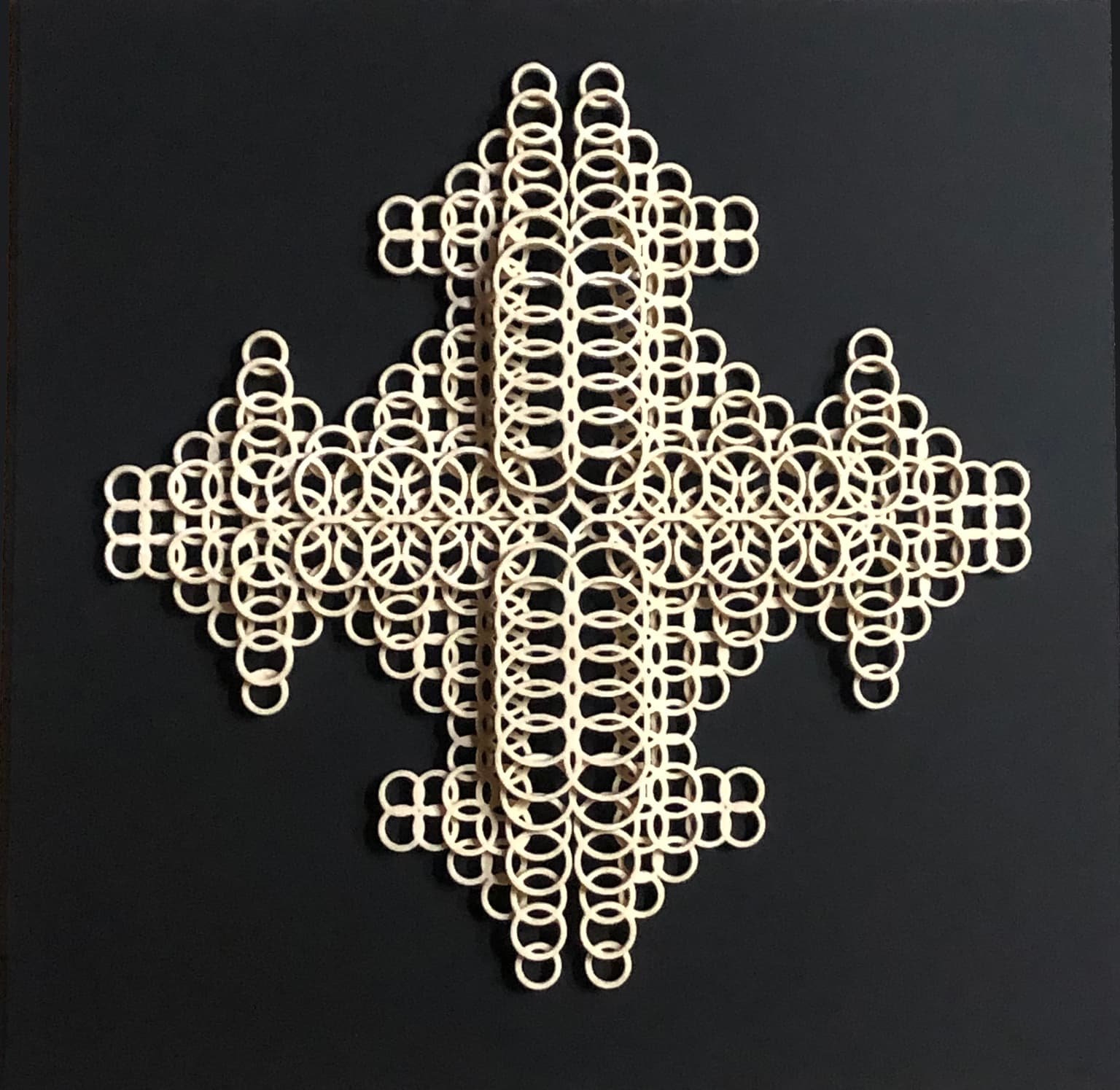Robert Krawczyk
Artists
Robert Krawczyk
Artist
BitArt
United States
Statement
In design, every decision you make sets you off to another course that you could never see, sometimes never imagined. Some decisions spawn effects that are simple and are unrelated to the whole, some are highly integrated and interwoven to other parts in a very complex fashion. The exploration of cellular automata to generate two-dimensional ornamentation is extended into three-dimensions. The pattern is based on generations of survival, birth, and death. As the pattern evolves, for each cell that is occupied, its location and the number of times it is visited is recorded. This measure of history is then used to determine the rings three-dimensional location and its size; forming multiple layers.
Artworks

Transitions: simple rules based on neighborhood relationship are used to determine who lives, who dies, and who stays to propagate. Transitional rules can include a variety of neighbors depending if the framework is two or three dimensions.
Time: the present is always being created and past can be captured. Ability to remember past generations offers the envisioning of an entire life span of the cells. Enabling the capture of history offers glimpses into the past and a foundation for the present to build on. The number of generations determines the total expanse, the universe, density of cells, infinitely repeating patterns or possibly extinction.
Height implies orientation and levels. It implies a base, gravity, and grounding.